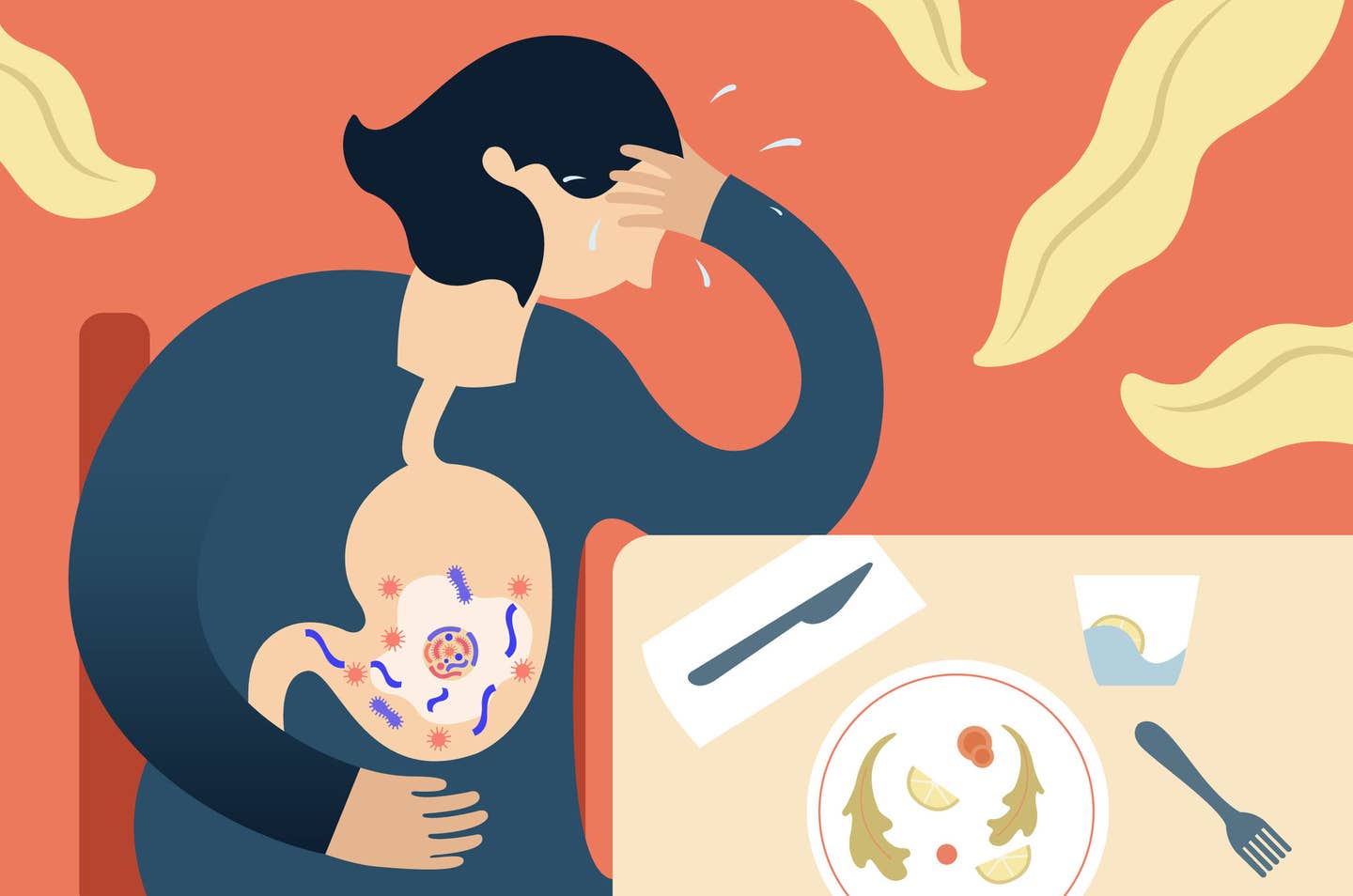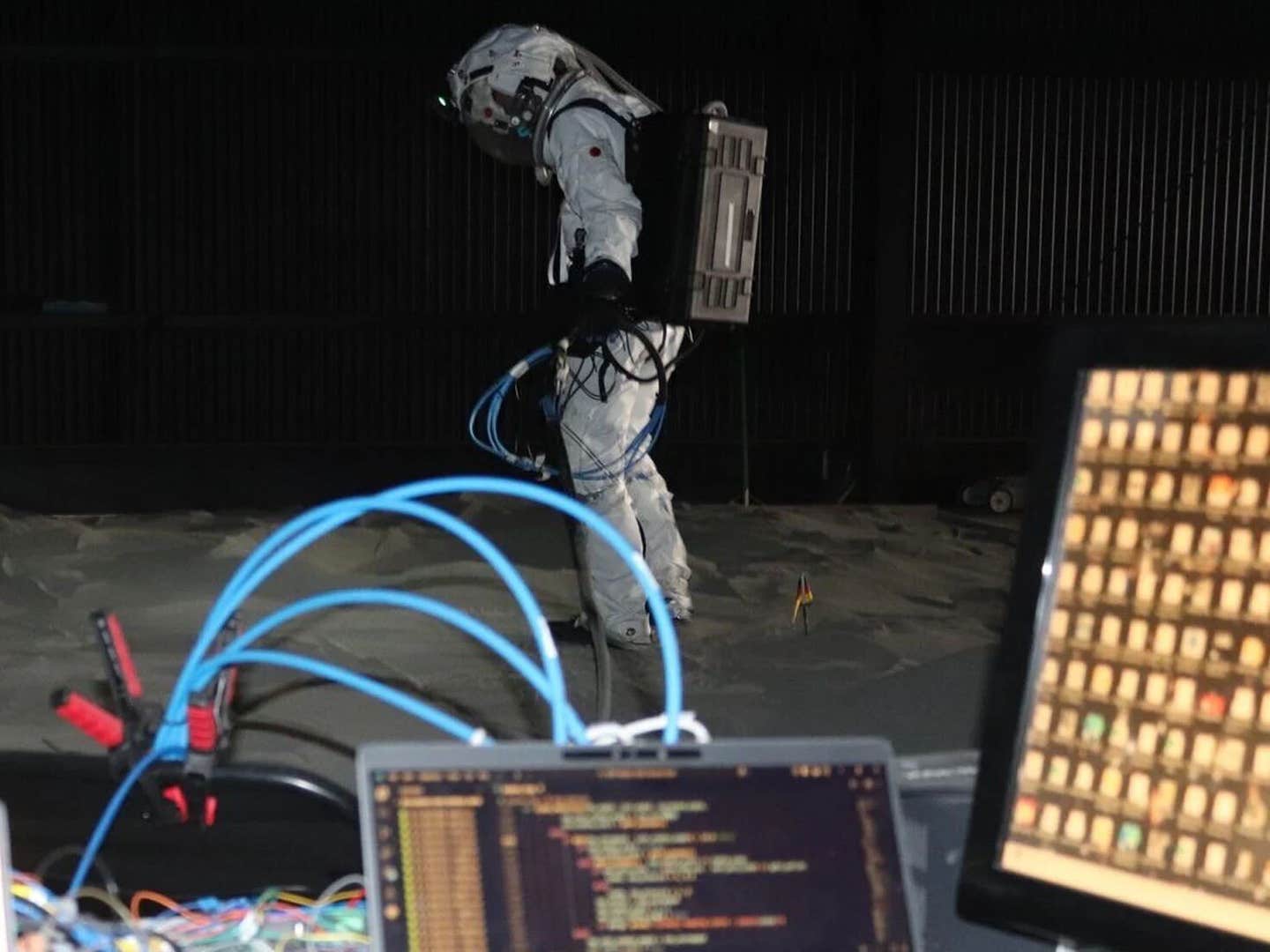Groundbreaking vaccine for norovirus stops the leading cause of food poisoning
The highly infectious virus that causes diarrhoea and vomiting is responsible for hundreds of millions of cases of food poisoning each year.

[Apr. 12, 2023: Staff Writer, The Brighter Side of News]
The highly infectious virus that causes diarrhoea and vomiting is responsible for hundreds of millions of cases of food poisoning each year. (CREDIT: Creative Commons)
Washington University School of Medicine in St. Louis has published a study on a novel way to make a vaccine for norovirus, a highly infectious virus that causes diarrhoea and vomiting, and which is responsible for hundreds of millions of cases of food poisoning each year.
The virus, which does not infect ordinary lab animals such as mice or rats, has so far proved to be intractable to study, leading scientists to struggle to find effective drugs and vaccines.
The new study outlines an innovative approach to creating a vaccine by piggybacking on the highly effective vaccines for rotavirus, another virus that causes diarrhoea. The researchers created an experimental rotavirus-norovirus combo vaccine by adding a key protein from norovirus to a harmless strain of rotavirus. Mice that received the experimental vaccine produced neutralizing antibodies against both rotavirus and norovirus.
The study in Proceedings of the National Academy of Sciences represents a major breakthrough in the search for a way to control one of the most common viral infections.
Related News
“Pretty much everyone has had norovirus at some point,” said senior author Siyuan Ding, PhD, an assistant professor of molecular microbiology. “You go out to eat, and the next thing you know you’re vomiting and having diarrhea. You will recover, but it’s going to be a rough three days or so. For kids in the developing world who don’t have access to clean water, though, it can be deadly. The rotavirus vaccines work really well, and there are already global distribution systems set up for them, so based on that, we saw an opportunity to finally make some headway against norovirus.”
Before the first rotavirus vaccines were rolled out in 2006, around half a million children around the world died every year of diarrhoea caused by rotavirus infection. Today, this number has dropped to around 200,000, still high but a significant improvement.
Four rotavirus vaccines are currently in use around the world. All are live-virus vaccines, meaning they are based on weakened forms of rotavirus capable of triggering an immune response but not of making people sick.
Intestinal cells (nuclei shown in blue) are infected with a strain of rotavirus genetically modified to carry a gene from norovirus (green). (CREDIT: Takahiro Kawagishi / Washington University)
However, human norovirus has proven to be a much more difficult virus to investigate. It doesn’t infect mice or rats, so the kinds of experiments that led to the development of rotavirus vaccines have been impossible to replicate with norovirus. That's why Ding and colleagues came up with the idea of using rotavirus as a way to bypass the technical difficulties of working with norovirus. They worked with a laboratory strain of rotavirus as a stand-in for one of the approved rotavirus vaccines, which are proprietary.
The researchers inserted the gene for the protein that forms the outer surface of human norovirus into the genome of the rotavirus lab strain. They then administered the modified rotavirus to immunocompromised infant mice by mouth, the same way rotavirus vaccines are given to children. They took blood and faecal samples four, six, and eight weeks later. Nine weeks after the initial immunisation, the researchers gave the mice a booster by injection and took samples again a week later.
In vitro characterization of rRRV-HuNoV-VP1. Electrophoretic analysis of viral dsRNA. Viral dsRNAs were purified from rRRV and different passages of rRRV-HuNoV-VP1, separated by RNA-PAGE, and visualized by silver staining. The modified gene segment 7 is indicated by a red asterisk. (CREDIT: PNAS)
A strong antibody response was evident in the blood of nine of the 11 mice tested, and in the intestines of all 11 mice. Even better, some of the antibodies from the blood and the intestines were able to neutralize both viruses in human “mini-gut” cultures in a dish. Such cultures, also known as organoids, are grown from human stem cells and replicate the surface of the human gut.
“Traditionally, vaccine studies have focused on the antibody response in the blood, because we understand that part of the immune response the best,” Ding said. “But norovirus and rotavirus are gut viruses, so antibodies in the blood are less important than the ones in the intestines in terms of fighting off these viruses. The fact that we saw a strong antibody response in the intestines is a good sign.”
Immunostaining analysis of protein expression by rRRV-HuNoV-VP1 in MA104 cells. MA104 cells were infected with the rRRV or rRRV-HuNoV-VP1 at MOI of 1 FFU/cell and fixed at 24 h postinfection, or the cells were transfected with pCAG-HuNoV-VP1 plasmid and fixed at 3 d posttransfection. The cells were stained with antibodies specific to RV-VP6 (red), HuNoV-VP1 (green), and DAPI (blue). Representative data of two independent experiments are shown. (Scale bar, 50 μm.) (CREDIT: PNAS)
The next step for the researchers is to show that animals immunized with the experimental vaccine are less likely to get sick or die from norovirus. Ding and his team have started conducting such experiments to determine the vaccine's effectiveness in preventing norovirus infections.
If these animal studies are successful, the next step would be to conduct human trials. However, it will take several years to complete the necessary testing and regulatory approvals before the vaccine can be widely distributed.
The power of this study lies in its potential to accelerate vaccine development for a variety of troublesome organisms that cause diarrhea, especially in resource-limited countries where many of these infections occur.
According to the World Health Organization, diarrheal diseases are the second leading cause of death in children under the age of five, accounting for around 525,000 deaths annually.
"There are a lot of intestinal pathogens out there for which we don't have good treatments or vaccines," Ding said. "In principle, we could put a gene from any organism that infects the intestinal tract into the rotavirus vaccine to create a bivalent vaccine. We'd have to find the right targets to produce a good immune response, of course, but the principle is simple."
As basic scientists, Ding and his team are excited about the potential to move their work forward into the clinic and make a tangible impact on human health. They believe that their innovative approach to vaccine development could help to finally bring under control one of the most common and intractable viral infections.
"Pretty much everyone has had norovirus at some point," Ding said. "You go out to eat, and the next thing you know you're vomiting and having diarrhea. You will recover, but it's going to be a rough three days or so. For kids in the developing world who don't have access to clean water, though, it can be deadly. The rotavirus vaccines work really well, and there are already global distribution systems set up for them, so based on that, we saw an opportunity to finally make some headway against norovirus."
For more science and technology stories check out our New Discoveries section at The Brighter Side of News.
Note: Materials provided above by The Brighter Side of News. Content may be edited for style and length.
Like these kind of feel good stories? Get the Brighter Side of News' newsletter.



